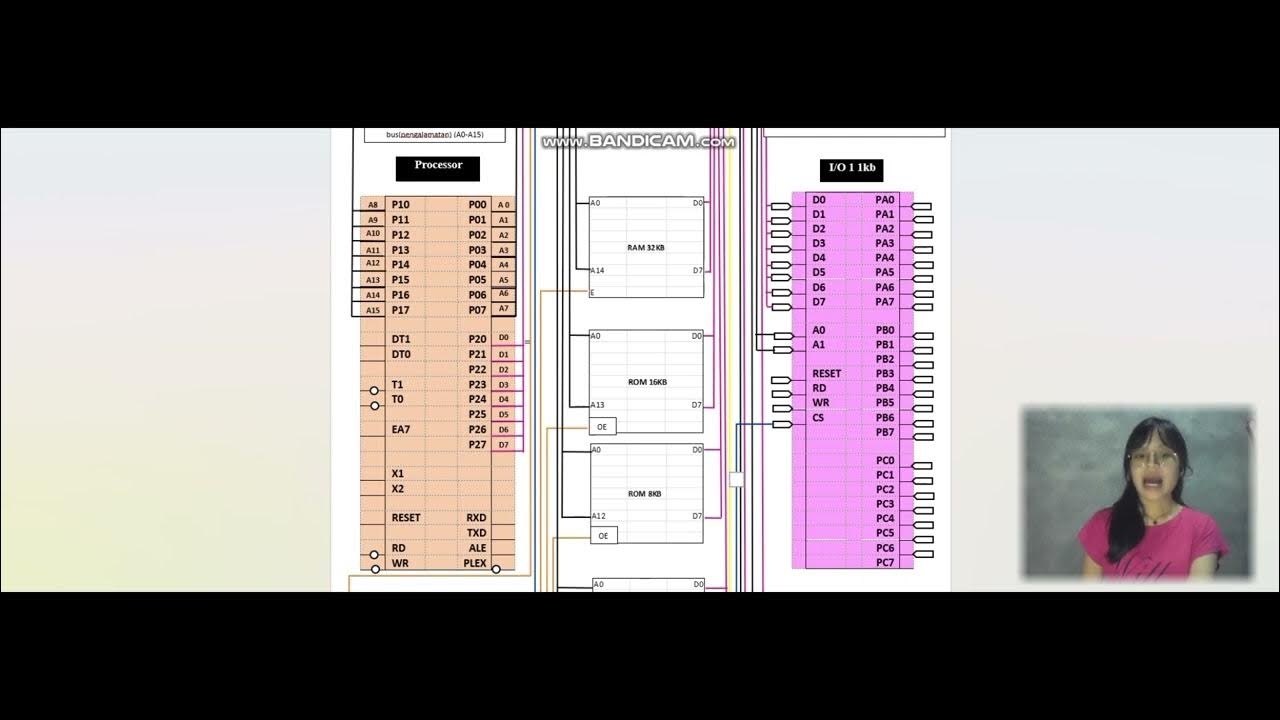I/O Structure in Operating system || Computer System Organization || Operating System
Summary
TLDRThis video explains the Input/Output (I/O) structure in computer systems, focusing on how data is transferred between devices and memory. It introduces the concept of interrupt-initiated I/O, where the CPU pauses execution to transfer small amounts of data from devices like hard disks to memory. However, this method is inefficient for large data transfers. To overcome this, Direct Memory Access (DMA) is used, which allows devices to transfer large amounts of data to memory without CPU intervention, thus enhancing performance for bulk data transfers.
Takeaways
- 😀 The I/O structure in operating systems involves interaction between the CPU, device controllers, and memory.
- 😀 Every computer system consists of a CPU, drivers, controllers, and memory, interconnected via a common bus.
- 😀 Device controllers are responsible for managing data transfers between devices like hard disks and the memory.
- 😀 The CPU can only execute programs when they are loaded into memory, but programs are initially stored on devices like hard disks.
- 😀 Interrupt-initiated I/O involves device controllers sending an interrupt signal to the CPU when data is ready for transfer to memory.
- 😀 When an interrupt is received, the CPU halts its current program to transfer data from the device's local buffer to the memory.
- 😀 Interrupt-initiated I/O is efficient for small data transfers but becomes inefficient for larger data transfers.
- 😀 Large data transfers, such as those from hard disks, can cause delays when using interrupt-initiated I/O, as data is moved byte by byte.
- 😀 Direct Memory Access (DMA) is introduced as a solution to transfer large amounts of data directly between device controllers and memory without CPU intervention.
- 😀 DMA allows the CPU to focus on executing programs while the DMA controller handles data transfers, improving efficiency for large-scale data operations.
Q & A
What are the three main concepts in computer system organization?
-The three main concepts in computer system organization are: 1) Computer System Operations, 2) Storage Structure, and 3) IO Structure.
What is the role of a device controller in a computer system?
-The device controller manages communication between the device (e.g., hard disk) and the system's memory. It transfers data to and from the local buffer and the main memory, ensuring the device operates efficiently.
How does interrupt-driven IO work?
-In interrupt-driven IO, the device sends an interrupt signal to the CPU when data is available. The CPU then halts the current execution and transfers the data from the device to the main memory using an Interrupt Service Routine (ISR).
What is the limitation of interrupt-driven IO when transferring large amounts of data?
-Interrupt-driven IO is inefficient for large data transfers because it transfers data bit by bit, requiring multiple interrupts. Each interrupt causes the CPU to stop its current task, which slows down the overall transfer process.
What is DMA and how does it improve IO data transfer?
-DMA (Direct Memory Access) is a system that allows devices to transfer data directly to the main memory without CPU intervention. This reduces CPU workload, improves speed, and is ideal for transferring large amounts of data.
How does DMA differ from interrupt-driven IO?
-DMA bypasses the CPU during data transfer, directly moving data between devices and memory. In contrast, interrupt-driven IO involves the CPU transferring the data, making DMA faster and more efficient, especially for large data.
Why is DMA more suitable for transferring large data compared to interrupt-driven IO?
-DMA is more suitable for large data because it eliminates the need for the CPU to handle each small piece of data individually, as in interrupt-driven IO. This speeds up the process and reduces the overhead of frequent interruptions.
What happens when the device controller has data ready for transfer?
-When the device controller has data ready, it sends an interrupt signal to the CPU. The CPU then suspends its current execution and transfers the data from the device's local buffer to the main memory.
What role does the CPU play in interrupt-driven IO?
-In interrupt-driven IO, the CPU is responsible for handling the interrupt, halting the current program, and transferring data from the device's buffer to the main memory. Afterward, the CPU resumes its original program.
What is the purpose of the local buffer in the device controller?
-The local buffer in the device controller temporarily stores data from the device (e.g., hard disk) before it is transferred to the main memory. This buffer helps manage the flow of data and enables efficient communication between the device and memory.
Outlines

This section is available to paid users only. Please upgrade to access this part.
Upgrade NowMindmap

This section is available to paid users only. Please upgrade to access this part.
Upgrade NowKeywords

This section is available to paid users only. Please upgrade to access this part.
Upgrade NowHighlights

This section is available to paid users only. Please upgrade to access this part.
Upgrade NowTranscripts

This section is available to paid users only. Please upgrade to access this part.
Upgrade NowBrowse More Related Video

L-1.8: Data Transfer Instructions in Computer Organisation and Architecture

Basics of OS (I/O Structure)

L-4.1 I/O Interface | Input Output Interface | I/O Commands | Computer Architecture | COA | CSA

Komputer dan Komponen Penyusunnya | Bab Sistem Komputer

Organisasi dan Arsitektur Komputer

1. Arsitektur Komputer - Organisasi dan Arsitektur Komputer
5.0 / 5 (0 votes)